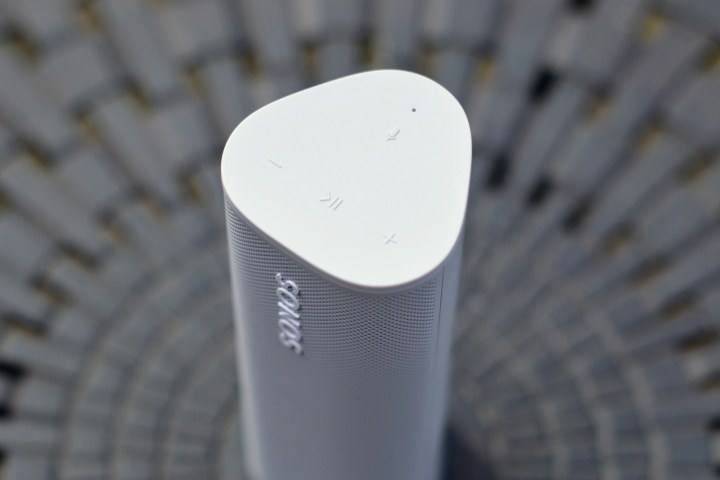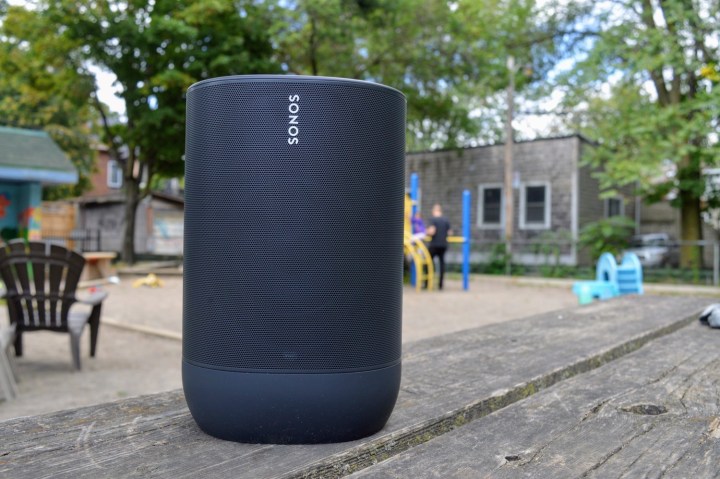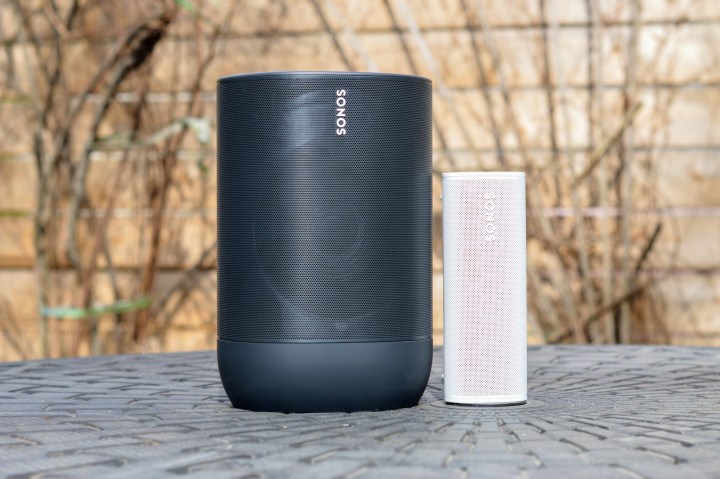From pool parties to backyard barbecues, it’s not uncommon for there to be a Sonos supplying the tunes. In late 2019, the wireless audio company branched out from inside the home to the patio with the unveiling of its first on-the-go Wi-Fi and Bluetooth speaker, the Sonos Move. Boasting up to 11 hours of battery life, the Move is ultra-durable and controllable with Alexa and Google Assistant, while still delivering the rich, uncompromised sound that Sonos products are known for.
But there’s a new kid in town now. The
Looking for more wireless listening options? Check out our roundups of the best wireless speakers, the best Bluetooth speakers, and the best Bluetooth speakers under $100.
Design and battery life

Rugged, weather-resistant, and drop-resistant are three shared traits between both the Sonos Roam and Sonos Move speakers. In terms of overall design though, there are several differences. Measuring 6.61 inches tall, 2.44 inches wide, 2.36 inches deep, and weighing 0.95 pounds, the
Physical buttons are relegated to the top of the speaker and include play/pause functions, volume adjustments, skip, and replay, along with a mic mute and, new to the Roam, a Bluetooth pairing button to instantly link the speaker to your favorite mobile devices. An IP67 rating protects the speaker from all dust and debris and allows the Roam to be submerged in up to 3 feet of water for 30 minutes, making it ideal for pool and shoreside tunes. The built-in 18Wh battery allows for up to 10 hours of continuous playback. It’s packaged with a USB-C to USB-A cable, so you can connect to any 5V power brick or Qi-certified wireless charger to re-juice the Roam. While charging options are convenient for the Roam, we do miss the dedicated charging dock that comes with the Move. However, you can purchase a

The
The Move’s physical buttons include play/pause, volume adjustments, skip, replay, and a mic mute option. The speaker is IP56 rated, ensuring good (but not perfect) protection against dust and debris, along with blasts of water and bad weather. Unlike the Roam, you don’t want to go submerging your Move in your swimming pool though. The 36Wh battery promises up to 11 hours of playback and includes a dedicated charger (unlike the Roam). Both the Roam and Move are available in black and white finishes.
It’s hard to declare a winner for this category, as some will prefer the lesser real estate of the Roam, while others will be happier with the Move’s bigger profile. While the Roam is submergible, the Move can withstand a dousing, just not a shallow-end dunk in the pool. The Roam is easy to grab and position, but the Move isn’t that cumbersome. Plus, it has a carrying handle. We’re calling this one a tie.
Winner: Tie
Sound quality

Both the
We love what both speakers can do, in terms of both volume output and clarity. The Roam is one of the best small wireless speakers we’ve heard to date. It gets plenty loud for outdoor listening and is clear and well-balanced at volume levels below 75%. After 75% output, bass and mids fall away, leaving higher frequencies to fill out the remaining volume pocket — typical of speakers this size.
That being said, the Move features a stronger audio presence overall. It’s louder, capable of bass-heavy delivery and wider sound-staging, and particularly shines when placed in an outdoor setting.
Both speakers employ far-field mics for
In terms of overall audio experience, we’re giving this category to the Move. As far as small speakers go, and
Winner:
Features

Like the rest of the
Both speakers are also controllable through Amazon Alexa and
Exclusive to the Roam is a feature called Sound Swap, which sends the Roam’s source audio to the closest
With a slight leg-up in the features department, the laurel goes to the
Winner:
Price and warranty
This is perhaps one of the largest differences between the devices. The newly released
Winner:
The verdict

Frequent travelers, social listeners, and bargain-hunters will likely prefer the extreme portability and value of the Roam. It’s one of the best speakers in its size class and doesn’t hold back on any
Considering performance, features, and value overall, we’re calling it a draw between both mobile
Winner: Tie



